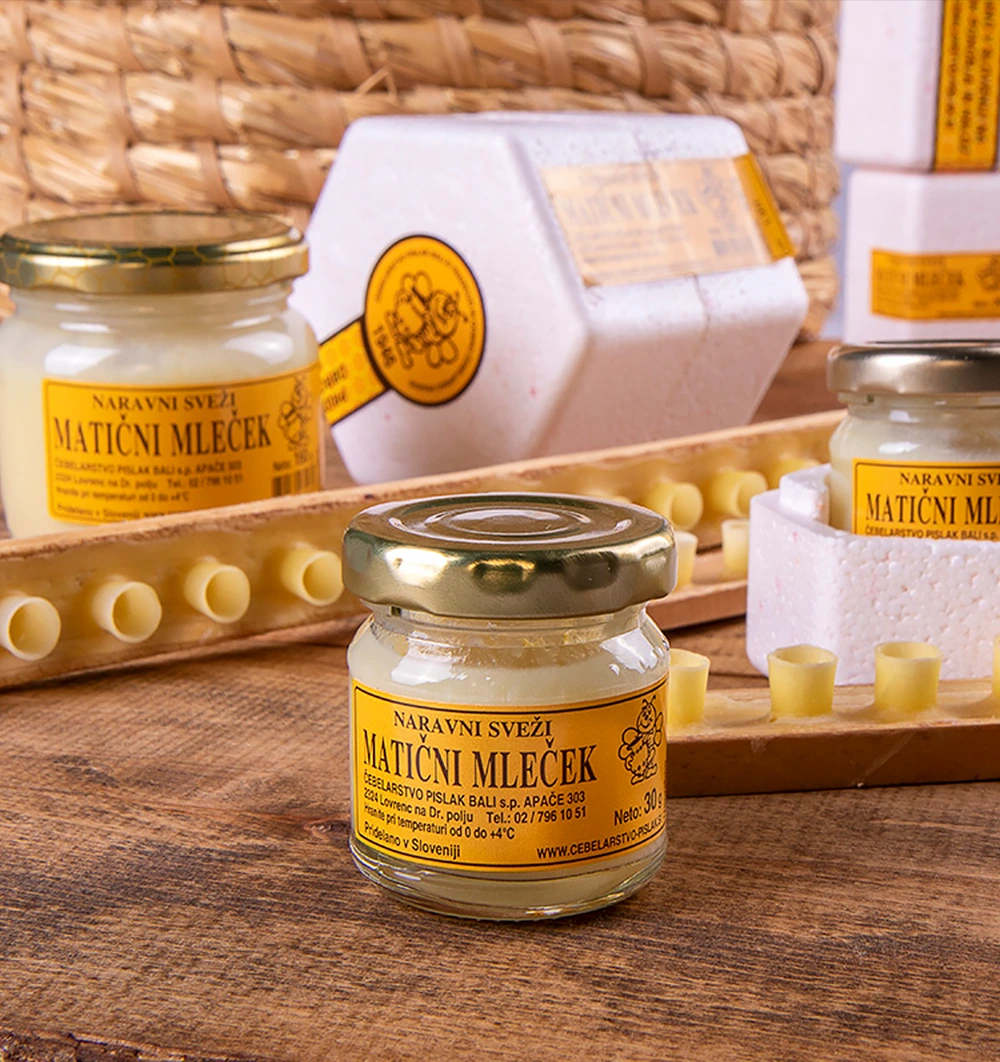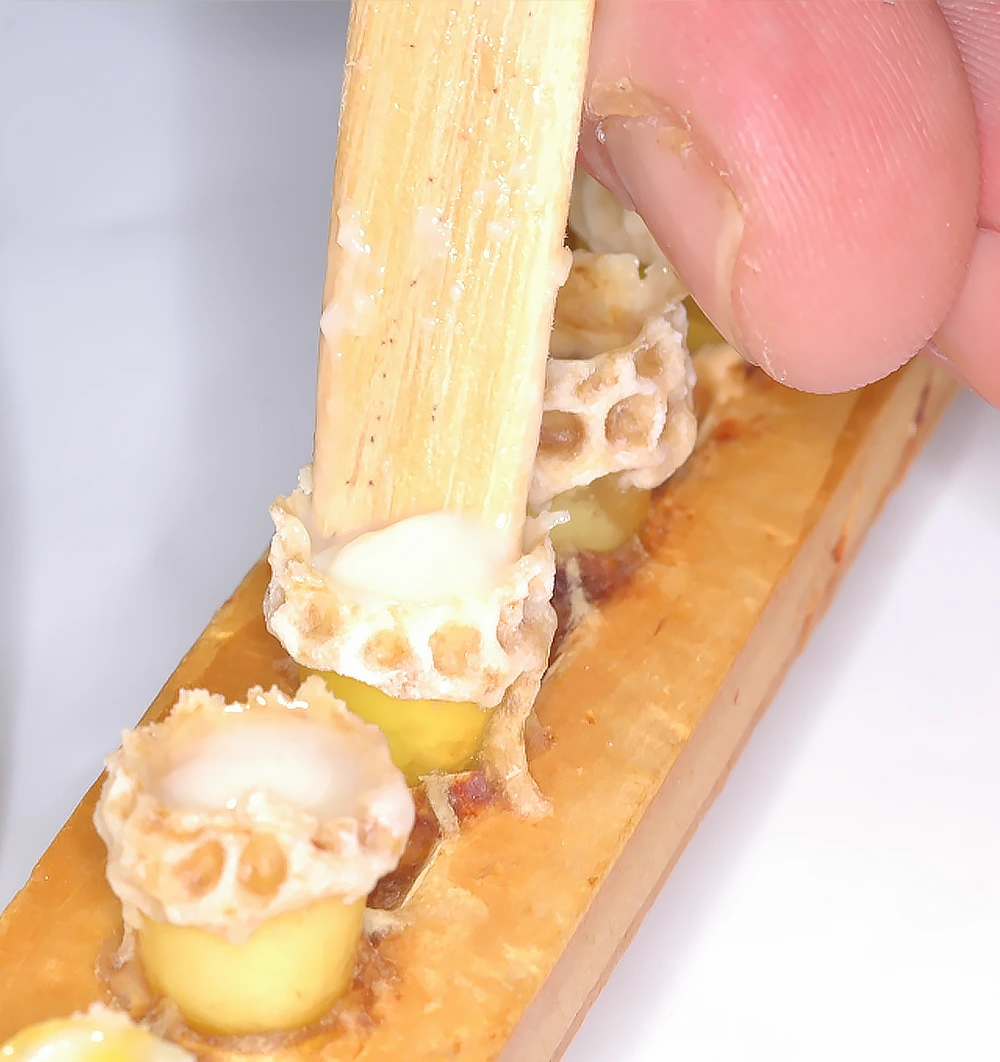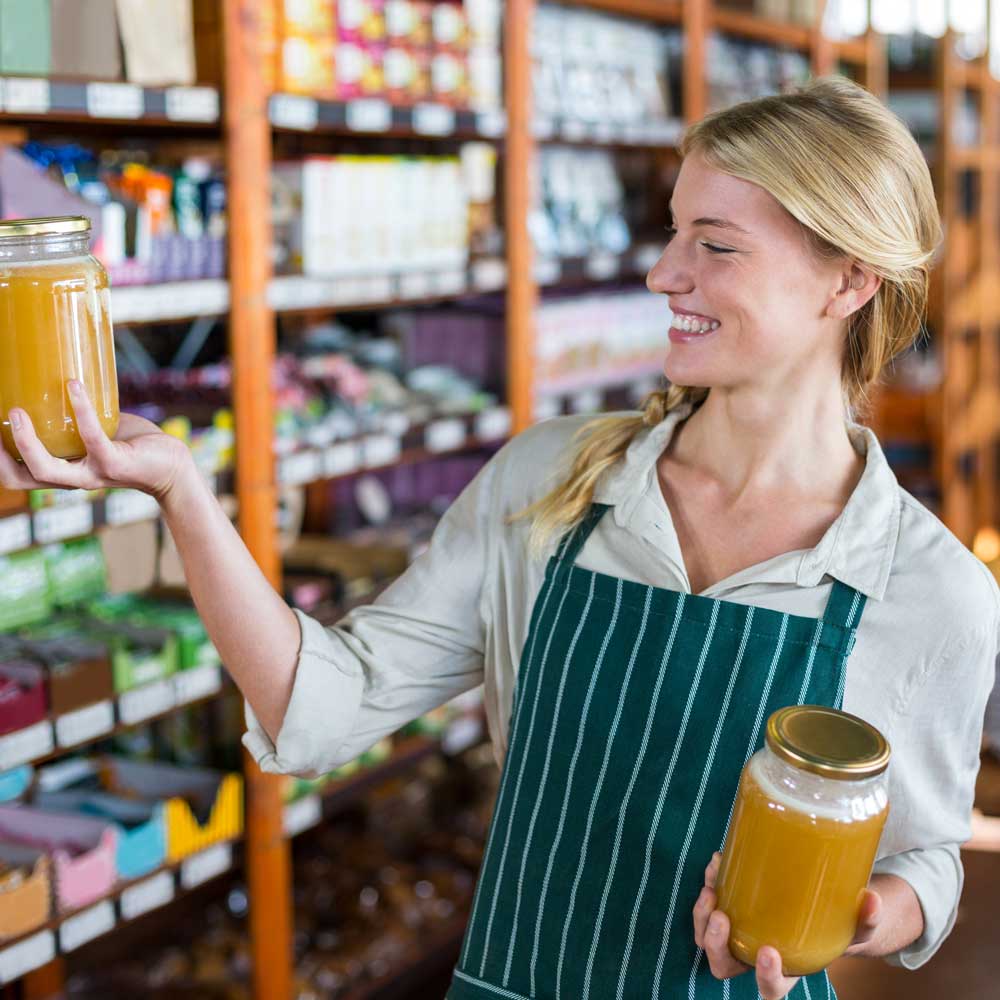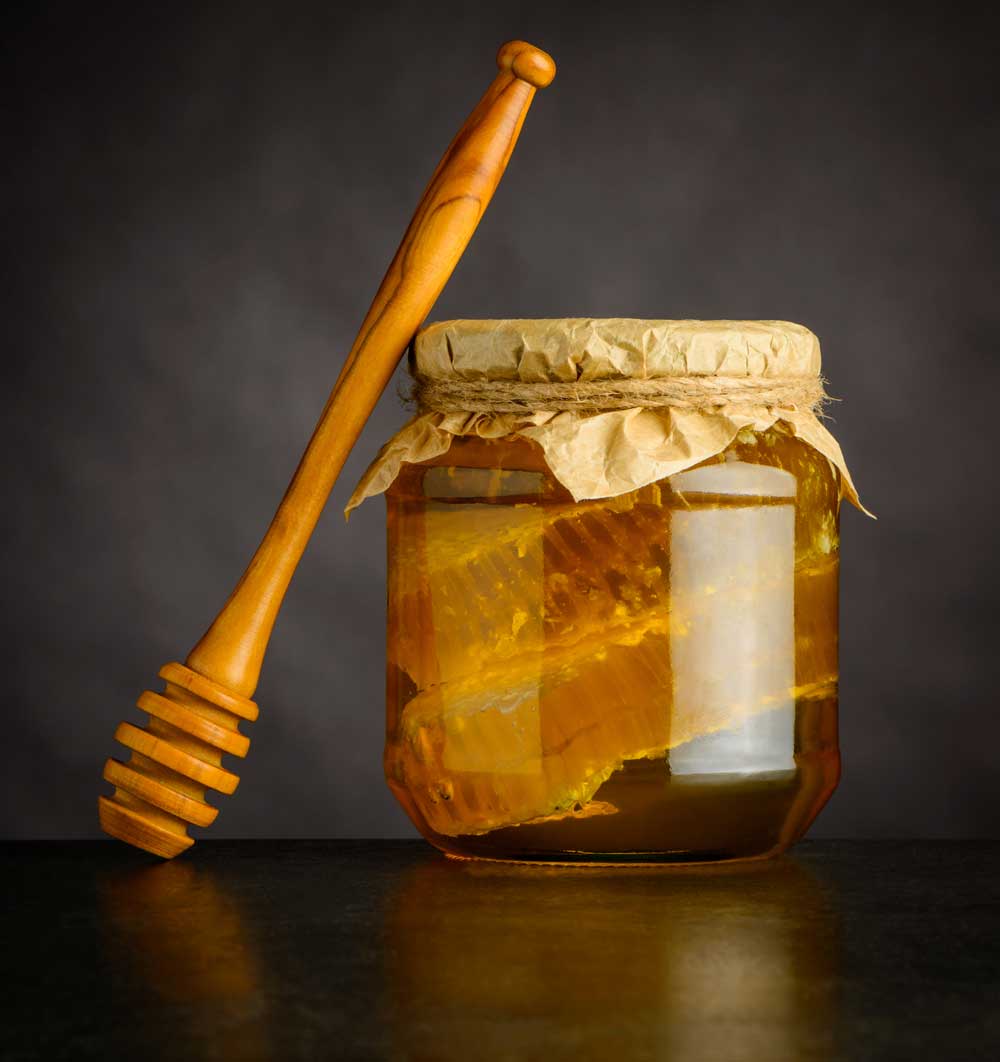
Royal jelly
Royal jelly is a secretion produced by the mandibular and hypopharyngeal glands of worker bees aged 6 to 15 days and plays a crucial role in the development of the queen bee within the hive.
What does royal jelly contain?
Royal jelly contains up to 18% proteins, around 10% fats, about 15% carbohydrates, amino acids approximately 15%, and primarily B-group vitamins, including H, D, A, C, K, and some vitamin E. It also contains mineral substances in the form of salts (iron, cobalt, manganese, silicon, sodium, potassium, calcium, phosphorus). Additionally, it includes sugars, sterols, and nucleic acids. Of particular significance in royal jelly is the 10-decenoic-2-transoic acid, believed to contribute to the longer lifespan of the queen bee (45 times longer than that of worker bees). Substances in royal jelly inhibit the development of bacteria and mold. It also contains pollen from plants visited by bees, allowing the origin to be inferred through pollen analysis. The most characteristic substance in royal jelly is 10-hydroxy-2-decenoic acid (10-HDA), unique to royal jelly, making its content a crucial criterion for authenticity. The composition varies with seasonal and environmental factors, with carbohydrates and fats affected by the season, while protein and water content are less influenced. Ash content and pH value are independent of seasonal effects. Differences arise due to variations in the diet, age of worker bees, bee race, and the method of obtaining and storing royal jelly.
How is royal jelly obtained?
Worker bees secrete royal jelly from the hypopharyngeal glands between the 5th and 12th day of age. During this period, nurse bees feed larvae, the queen, and drones during mating. After the 12th day, the gland shrinks until it disappears completely. Queens have poorly developed glands, while drones lack them. Royal jelly is obtained by harvesting it from cells that would develop into queens (queen cells) or from cells with young brood. More than 2000 queen cells are needed to produce one kilogram of royal jelly. Harvesting royal jelly is a demanding technique mastered by only a few beekeepers.
Uses of royal jelly:
Royal jelly should be stored in the refrigerator during use, and it is usually kept in the freezer before consumption. The recommended dosage is up to 7 grams per day, preferably taken raw. Using a plastic or wooden (non-metallic) spoon, royal jelly is placed under the tongue, where the body absorbs it, providing a revitalizing effect after a few minutes. The distinct taste, accompanied by a burning sensation upon ingestion, indicates genuine, undiluted royal jelly. Diluted royal jelly is available in various preparations. Today, royal jelly is recognized as a natural remedy and tonic, with Chinese medicine emphasizing its effects on the aging process.



HEALING EFFECTS
While royal jelly is not a cure-all, it has proven beneficial and effective in many health conditions. Particularly good results have been achieved in children and older individuals, making it recognized as a remedy and tonic in many places. Western medicine doesn’t recognize it as a medicine, but it is considered a general tonic. Its proven beneficial properties include:
- Promoting general well-being and alleviating chronic fatigue
- Allowing extended mental work without fatigue
- Effectively reducing nervous tension
- Accelerating metabolism
- Normalizing growth and development in children
- Boosting the body’s resistance to diseases
- Enhancing hair growth and development
- Serving as a significant blood-forming stimulant
- Being effective in treating rheumatism
- Alleviating issues related to the heart, liver, or stomach
- Regulating the function of glands
- Acting positively in addressing the consequences of high blood pressure
- Providing protective effects in cases of excessive radiation exposure
- Chinese medicine, in contrast to Western medicine, emphasizes its role in inhibiting aging processes in the body. Patients generally tolerate royal jelly well.
Royal jelly is also used in cosmetics because it:
- Increases the vitality of epidermal cells
- Improves their metabolism
- Reduces the amount of decomposition substances left in cells
- Prevents denaturation of fibroelastic tissues
- Delays skin aging.
Storing royal jelly:
Due to its composition, royal jelly is highly sensitive. Moisture, heat, light, and chemical agents harm it. Exposed to air, it dries, becomes sticky, hardens, and takes on a dark yellow color. Pure royal jelly is stored in a dark place at temperatures up to 4°C. It is also available in lyophilized form, which is less sensitive to temperature, with its quality not significantly lower than fresh royal jelly. Additionally, it can be purchased in the form of capsules, syrups, or mixed with honey (1 to 3%). In these forms, it is more suitable for wider consumption, especially since it doesn’t require refrigeration, ensuring consistent quality.
Taking royal jelly:
The best absorption occurs when taking pure royal jelly on an empty stomach, placing it under the tongue and letting it dissolve. Within a few minutes, a revitalizing effect is usually felt. It is taken with a plastic or wooden spoon (avoiding metal if possible). The daily dose should not exceed 1 gram. Adults typically take 300 to 500 milligrams of royal jelly per day, with doses for children being half as much. The duration of treatment varies, depending on the condition being addressed. Generally, an effect is not expected within the first month. It is advisable to opt for two-month courses, repeating them every few months, alternating with courses of pollen.



Opinions
What others think
I'm getting ready for an IVF procedure, and I'm wondering if any of you have taken royal jelly directly from beekeepers and what dosage you recommend. Besides, I'm taking folic acid... Do you think it's necessary to take anything else for good cells and prepare the body for IVF? ALSO: I take royal jelly with a spoon... Do I have to grit my teeth? This thing really has a terrible taste... but... all for the little one... bye-bye.
I took it during the IVF procedure, and the result was very good. I produced 25 cells and then froze 13 embryos from them. I think folic acid and royal jelly are enough. It's not good to take too much of everything at once. I hope you didn't buy royal jelly at the pharmacy, and you have it from a beekeeper; they're better. I took it every night with a plastic spoon. I grabbed it on the tip of the spoon and placed it under my tongue. When do you have the puncture?
Royal jelly is supposed to have a positive effect on infertility. Women who couldn't conceive for a long time (with unexplained infertility) reportedly got pregnant within two months. I also bought it for better cells before IVF.
PROVIDERS

ČEBELARSTVO PISLAK BALI
Apače 303, 2324 Lovrenc na Dr. polju
Slovenija, EU

ČEBELARSKI CENTER MARIBOR
TRGOVINA JANA
Jana Pušnik Pokrivač s.p.
Tavčarjeva 11, 2000 Maribor
ČEBELARSKI CENTER MARIBOR
Streliška 150, 2000 Maribor

ČEBELARSTVO KOTNIK
Jože Kotnik, Prepuž 3, 2316 Zgornja Ložnica
Hello! I've been taking royal jelly for almost ten days now, and I must say I can't get used to the taste at all. Awful. I'm not too sensitive, and I always try everything out of curiosity for different flavors, but this one doesn't sit well with me. I always have to have something to drink with it because it literally lifts me. But I'll persevere and hope for positive effects.